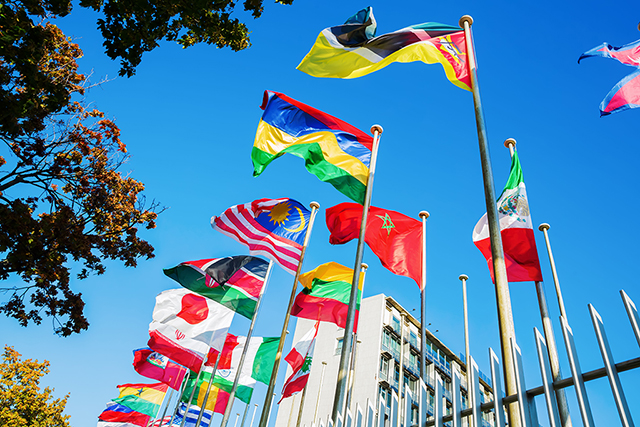MDIs
In accordance with its standard-setting role, International Programme for the Development of Communication (IPDC) has developed a comprehensive set of Media Development Indicators (MDIs) aimed at enabling the assessment of media landscapes at national level. These indicators, that cover all aspects of media development, are currently being applied in various countries worldwide to identify their specific needs in view of guiding the formulation of media-related policies and improving the targeting of media development efforts.
Background
The Media Development Indicators were developed through a broad international consultation launched by the IPDC Intergovernmental Council at its 25th session in 2006. The indicators were endorsed by the Council at its subsequent session in 2008 as an “important diagnostic tool for all stakeholders to assess media development in a given country and to thereby determine the areas in which assistance is most needed”. The Council adopted a Decision inviting the IPDC Bureau and other stakeholders working in the area of media development to take the Media Development Indicators into account when determining, in tandem with national authorities, communication development strategies within the overall context of national development.
Since 2008, the MDIs have been widely acknowledged by major actors in the media development field, including UNDP, the World Bank and the Council of Europe (see Resolution 1636, 2008).
The MDIs: a framework for assessing media development
The Media Development Indicators define a framework within which the media can best contribute to, and benefit from, good governance and democratic development. The MDIs look at all aspects of the media environment and are structured around the five following categories:
- A system of regulation conducive to freedom of expression, pluralism and diversity of the media
- Plurality and diversity of media, a level economic playing field and transparency of ownership
- Media as a platform for democratic discourse
- Professional capacity building and supporting institutions that underpins freedom of expression, pluralism and diversity
- Infrastructural capacity is sufficient to support independent and pluralistic media
Taken as a whole, they provide an aspirational picture of the media ecology to be constructed in order to ensure freedom of expression, pluralism and diversity of the media.
By indicator, one should understand a quantitative or qualitative factor or variable, measured over time, that provides a simple and reliable basis for assessing achievements, change or performance in a country’s media landscape. For each indicator, the MDI framework suggests various means of verification as well as potential data sources.
Journalism Education
UNESCO recognizes the fact that sound journalism education contributes towards professional and ethical practice of journalism. Such journalism is better suited to foster democracy, dialogue and development.
Professional news media acts as a guardian of public interest. It is an important component of the checks and balances that form part of a democracy. By disseminating information to citizens, the news media enables citizen participation in development and strengthens accountability feedback mechanisms. Citizens cannot exercise and enjoy their citizenship in the absence of crucial information and knowledge, which well-trained journalists are better placed to provide.
Therefore, society has a responsibility to ensure its journalists have the competencies to seek out and interpret information, and the judgment and integrity to communicate it in as objective and unbiased terms as possible. At the core of journalism is the need for newsrooms that are staffed by well-trained and critically-minded journalists who are likely to influence the processes of democracy and development in their societies.
"While press freedom is the cornerstone of democracy and development, a well-trained and professional cadre of journalists is in turn the foundation of that press freedom. Without the skills and expertise of the professional journalist the press cannot effectively campaign for economic development, democracy, accountability, transparency and for an end to the abuse of citizen’s rights."
Geoffrey Nyarota, Laureate of the UNESCO/Guillermo Cano World Press 2002 and former editor of Daily News, Zimbabwe.
Community Media
Community media are characterized by their accountability to the communities they serve. They emerge as a result of popular movements that strive to attain an important space in citizen participation and demand the right to own and operate free from political or commercial interference.
As an alternative medium to public and commercial media, community media engage in a social agenda amplifying views and concerns about context specific issues and facilitating public platforms for debate and discussion. They are independent, community owned and run media.
Community radio in particular has grown in numbers worldwide delivering an outreach mechanism for increased access to education, self-expression and communication among rural and hard to reach grassroots populations. The management, programming schedule and content of community radio is driven by the involvement and participation of community members and community decision-making bodies that demonstrate a sense of ownership about their own development agenda and become self-empowered to publicly express opinion, debate issues, carry out dialogue, promote culture, community history and language.
UNESCO recognizes that the presence of community radio is a sign of media pluralism, diversity of content, and the representation of a society’s different groups and interests. Community radio encourage open dialogue, local transparency and a voice to the voiceless.
- in the community,
- for the community,
- about the community and
- by the community.
The community can be territorial or geographical - a township, village, district or island. It can also be a group of people with common interests, who are not necessarily living in one defined territory.
Consequently, community radio can be managed or controlled by one group, by combined groups, or of people such as women, children, farmers, fisher folk, ethnic groups, or senior citizens.
What distinguishes community radio from other media is the high level of people’s participation, both in management and program production aspects. Furthermore, individual community members and local institutions are the principal sources of support for its operation.





